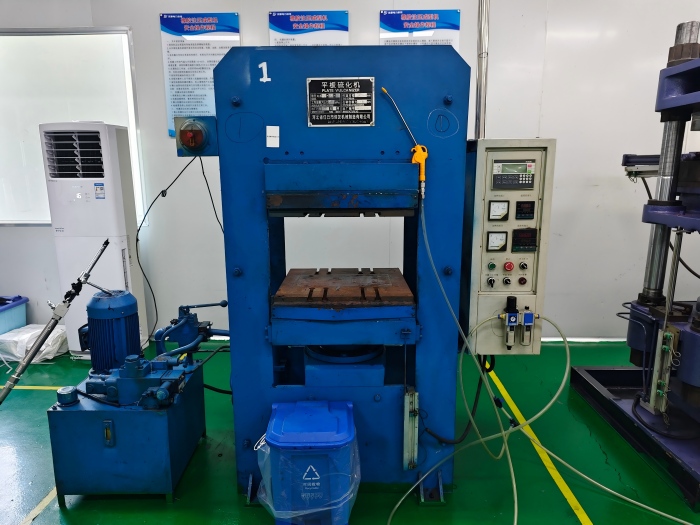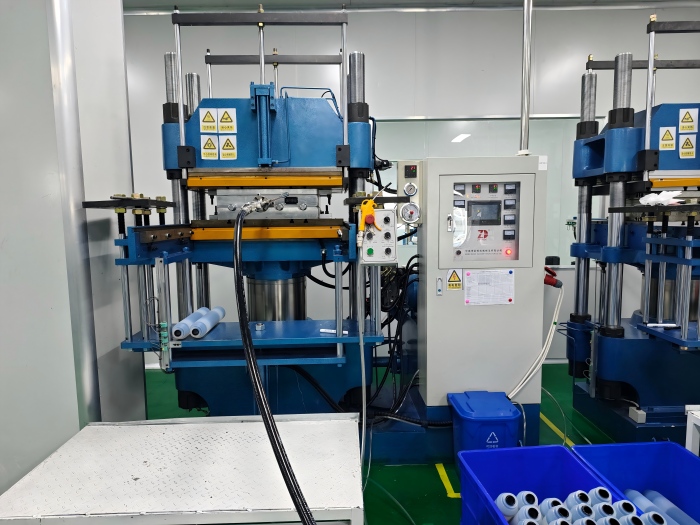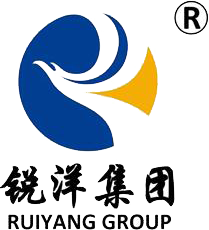
The Critical Control of Vulcanization: Mastering the Precision of Temperature and Time
2025-10-30 14:20In the world of polymer engineering, particularly in the manufacturing of rubber-based cable accessories like stress cones, insulation, and sheaths, vulcanization is the transformative process that turns a soft, sticky, and plastic compound into a strong, elastic, and durable material. At the heart of this molecular metamorphosis lies the precise control of two paramount parameters: temperature and time. Their meticulous management is not merely a step in the process; it is the very factor that determines the final product's electrical integrity, mechanical strength, and service life.
The Chemistry of the Chain: What is Vulcanization?
Vulcanization is a chemical process that creates cross-links—strong molecular bridges—between the long polymer chains of the raw rubber (such as EPDM or Silicone). Think of the raw polymer as a pile of loose spaghetti; vulcanization is the process that strategically adds tiny links between the strands, turning them into a cohesive, springy network. This network is what gives vulcanized rubber its exceptional resilience, thermal stability, and resistance to permanent deformation. The catalysts for this reaction are specific chemicals in the compound formula, but it is the application of heat that provides the essential energy to initiate and drive the reaction, and time that allows it to proceed to completion.

The Delicate Balance: Why Temperature and Time are Inseparable
The relationship between temperature and time in vulcanization is governed by fundamental chemical kinetics, most notably the Arrhenius equation. In practice, this means:
1. The Role of Temperature: The Reaction Driver
Temperature is the accelerator. Increasing the temperature provides more thermal energy to the molecules, dramatically speeding up the rate at which cross-links form. However, this is a double-edged sword. Too low a temperature results in an incomplete cure, leading to a product that is soft, weak, and prone to permanent set or failure under electrical and mechanical stress. Too high a temperature, on the other hand, can cause several catastrophic issues:
Reversion: The existing cross-links begin to break down faster than new ones can form, leading to a soft, tacky product.
Overcure: An excessively dense network can form, making the rubber brittle and prone to cracking.
Scorching: Premature vulcanization can occur before the material even fills the mold, ruining the product.
2. The Role of Time: The Reaction Completer
Time is the guarantor of completion. For a given temperature, there is a specific time required for the cross-linking reaction to reach its optimal state—a point known as the "optimum cure." Insufficient time leaves the reaction incomplete, resulting in under-cured material with poor physical and electrical properties. Excessive time wastes energy, reduces production efficiency, and risks the degradation associated with overcuring.

Precision in Practice: From Theory to Factory Floor
In a modern cable accessory factory, this balance is not left to chance. It is engineered with scientific precision:
Cure Time Calculation: Engineers use data from instruments like a Moving Die Rheometer to create a "cure curve." This graph plots the development of rubber stiffness against time at a specific temperature, allowing them to pinpoint the exact moment of optimum cure.
Automated Control Systems: Industrial vulcanization presses, such as autoclaves or compression molding machines, are equipped with sophisticated Programmable Logic Controllers that maintain the platen or chamber temperature within a tight tolerance (e.g., ±1°C) and control the cure time to the second.
The T-T (Time-Temperature) Profile: Each product has a defined "recipe"—a specific temperature and a corresponding time that are validated to produce the perfect molecular structure.
The Stakes of Imprecision: More Than Just Rubber
For a high-voltage cable termination, the consequences of poor vulcanization control are severe. An under-cured stress cone may slowly deform under electrical stress (creep), leading to a loss of critical sealing or a distortion of the electric field, eventually causing partial discharge and failure. An over-cured component might crack during installation or in service, allowing moisture ingress and leading to a short circuit. In essence, the thirty-year service life promised by a cable accessory is fundamentally rooted in the few minutes of perfectly controlled vulcanization it underwent in the factory.
The vulcanization process is a testament to the fact that in advanced manufacturing, the most critical factors are often the invisible ones. The precise synergy of temperature and time during this chemical reaction is what forges the robust, reliable, and elastic materials that form the backbone of our modern electrical infrastructure. It is a silent, meticulous dance at the molecular level, the success of which ensures that our power grids remain safe and operational for decades to come.
